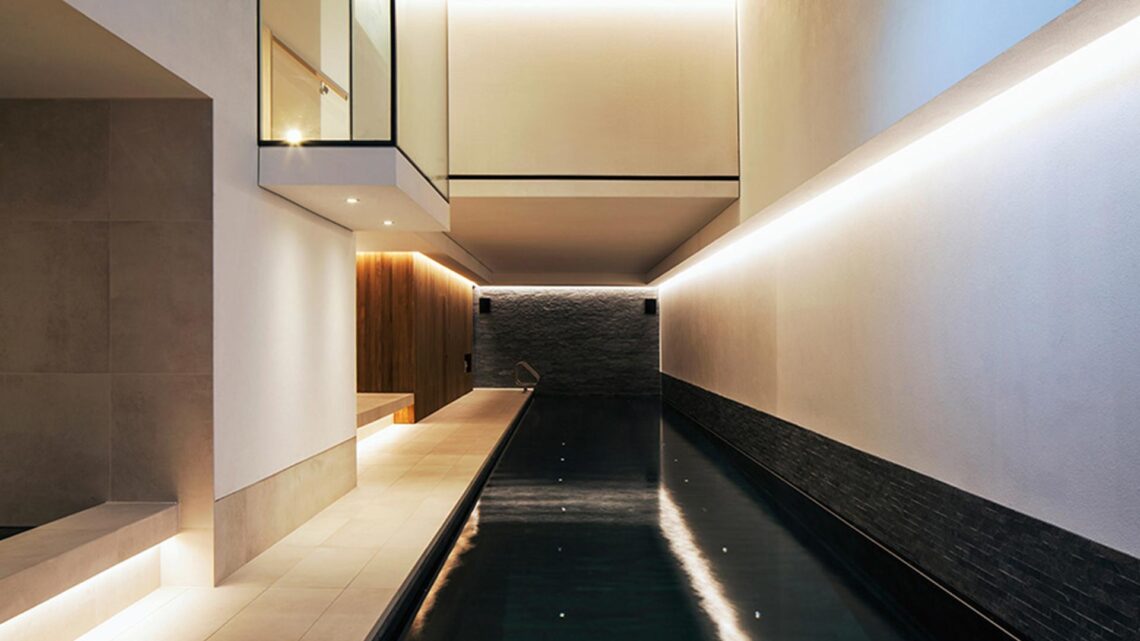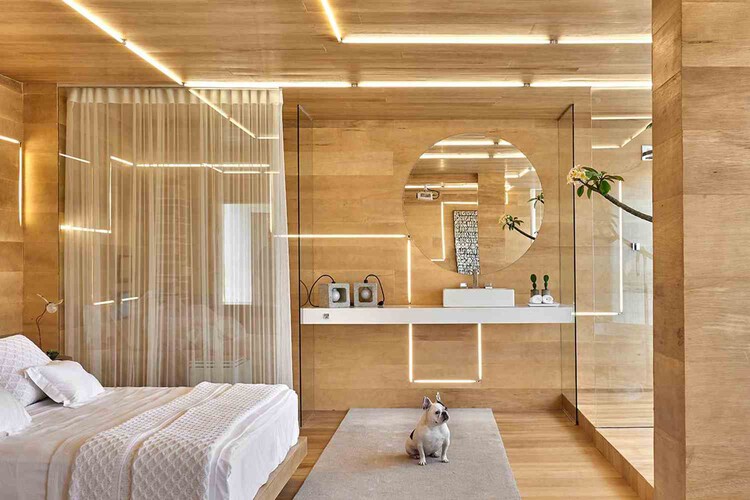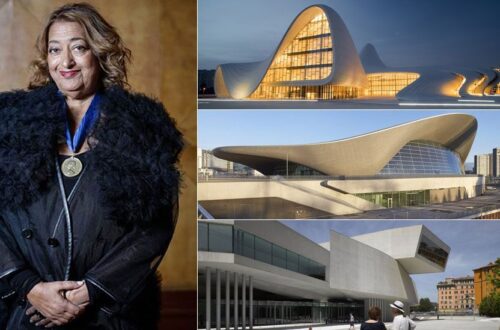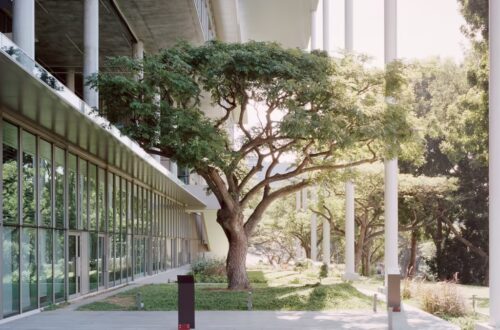
The Power of Light – Exploring Lighting & Its Impact on Architectural Spaces
Light is a crucial factor that determines how individuals view and appreciate the spaces around them. Thanks to this element, it is possible to highlight architectural and design details, and to even completely transform a space. As architecture proceeds, more and more studios and working architects are highlighting the importance of light in architecture and are turning this element into an essential part of their projects. At the end of the day, light is the channel that allows people to notice and value the environment, therefore, lighting design could significantly influence the well-being of the occupants of a space. In this article, we will be covering the importance of light and its direct impact on us and our spaces.
What is lighting?
Light is one of the most important elements in architecture as it influences everything from design to functionality. As mentioned prior, it has a strong impact on our moods therefore making it a crucial element for architects to understand. Lighting can range anything from the natural sunlight streaming through a window to the LEDS in a glowing fish tank – both of which have the ability to heighten a structural design. Light can provide natural illumination that makes the building feel warm and inviting, while accentuating every aspect of the building. Furthermore, lighting can determine the functionality of spaces by highlighting entrances, exits, stairways, etc.
Natural lighting & its benefits

Natural light is light generated naturally, most commonly by the sun. This lighting can be done by incorporating external glazings such as windows and skylights. Basically replacing transparent materials on walls to allow natural light or daylight to pass through. The three main types of approach to natural lighting include: direct sunlight, external reflection and internal reflection.
There are multiple benefits that come with incorporating natural lighting into one’s architecture. In the case of natural lighting, people’s psychological well-being is largely impacted by the quantity of natural light they are exposed to. This can possibly explain why a large number of individuals feel feelings of sadness or depression during the winter season, given that there is less natural light. Forward planning in the positioning of windows, roof lights, along with other origins of natural lighting can help offer that vital quantity of sunlight even in less sunlit times of the year.
Nonetheless, natural lighting comes with great benefits for our health and wellbeing:
- Vitamin D – The vitamin D absorbed by our skin when exposed to the sun helps to prevent bone loss, reduce heart diseases, weight gain and various cancers.
- Mental health – For areas that experience four seasons, during autumn, natural light becomes really important. A study from the National Library of Medicine shows that 6% of the population experiences depression when autumn begins. Therefore, it is crucial to get exposed to natural lighting especially during this season in order to prevent a decrease in one’s energy and mood.
- Better sleep – Lastly, various studies have shown that more exposure to sunlight results in better sleep, as natural lights help regulate our circadian cycle.
Artificial lighting & its benefits

Artificial lighting as the name implies is generated artificially. A common example is light-emitting diodes. Thanks to technology, we are able to control the quality, colour and brightness of artificial light and it is a necessity in our everyday lives. It helps us to work and function during hours of poor natural lighting and illuminates most of our nights. Furthermore, most of the current technology heavily relies on artificial lighting, including smartphones, lamps, televisions, laptops, car lights etc.
As you may have guessed, there are definitely benefits that come with artificial lighting:
- Mental health – Turns out natural lighting is not the only form of light that can help with one’s mental health and prevent likely chances of getting depression.
- Improved human effectiveness – Prior, humans were only productive during day time. However, with the introduction of artificial light, things have changed dramatically for our generation. Artificial lighting is brighter and enables us to stay awake longer to do more productive work – in turn leading to new innovations and inventions.
The significance of lighting in architecture
Lighting is the foundation of architectural buildings and structures. It changes our perception of a space, the shape, textures of materials and improves the buildings’ aesthetic features. It also plays an important role in ensuring the comfortability of occupants.
Designers tend to apply several tricks, especially when they need to delimit places or generate feelings. For example, glass plays a crucial role in how light enters a room and lighting that penetrates barriers and gets reflected on a surface like a floor adds intensity and breadth to an area that is not very huge. Furthermore, a benefit of efficient lighting is improved comfortability of occupants.
Three factors are vital in the formation of an effective harmony involving lighting and architecture. These are aesthetics, function and efficiency.
Aesthetics
In this category, architects and designers focus on the emotional impact of lighting and architecture on the occupants, carefully balancing these elements. They aim to create specific feelings and experiences for people when they step into a particular space, especially crucial for retail sites. Exterior lighting is designed to entice customers inside, while interior lighting is strategically arranged to immediately captivate their interest and highlight the products or offerings.
Functions
Balancing aesthetics with functionality, lighting should be carefully designed to serve its primary purpose: enabling people to see clearly. Adequate illumination is essential to create a sense of safety, comfort, and confidence for occupants as they move within a space, be it a room or a house. Visibility of floors and walls contributes to this assurance, fostering a feeling of security.
In addition to overall illumination, specific lighting solutions must be incorporated to facilitate various tasks. Task lighting is indispensable for activities like work, studying, and other focused endeavours. It ensures that individuals can carry out these tasks with ease and efficiency. Furthermore, an emergency lighting system should be in place to provide a clear path for people to escape in case of unforeseen events.
Ultimately, a well-balanced lighting design not only enhances the aesthetic appeal of the space but also contributes to the well-being and functionality of its occupants.
Efficiency
In the context of today’s emphasis on green construction and sustainability, creating an appealing and efficient lighting design is paramount. While functionality remains crucial, the layout should also be aesthetically pleasing and optimised for efficiency.
To achieve this, it’s essential to ensure that sufficient light reaches its intended targets, minimising any light loss. Careful selection of the right bulbs is key, as it not only enhances the overall design but also leads to long-term cost savings. LED lights, for instance, are a recommended choice due to their directional nature, reducing light wastage and maximising energy efficiency.
Bibliography
- admin. “Importance of Light in Architecture.” E-Architecture, 22 Nov. 2022, https://e-architecture.com/buildings/importance-of-light-in-architecture?utm_content=cmp-true.
- eMascaró. “The Importance of Light in Architecture: Uses and Planning.” Faro.es, 4 May 2023, https://faro.es/en/blog/es-la-importancia-de-la-luz-en-arquitectura-usos-y-planificacion-en-arquitectura/
- “Importance of Lighting | Natural & Artificial Lighting & Architecture.” Light Journey, 18 May 2020, https://lightjourney.com.sg/blogs/articles/importance-of-lighting#:~:text=Lighting%20is%20the%20foundation%20of.
- Targum, Steven D., and Norman Rosenthal. “Seasonal Affective Disorder.” Psychiatry (Edgmont), vol. 5, no. 5, May 2008, pp. 31–33, www.ncbi.nlm.nih.gov/pmc/articles/PMC2686645/.
- “The Importance of Lighting Design in Architecture.” Www.easyrender.com, www.easyrender.com/a/the-importance-of-lighting-design-in-architecture.




